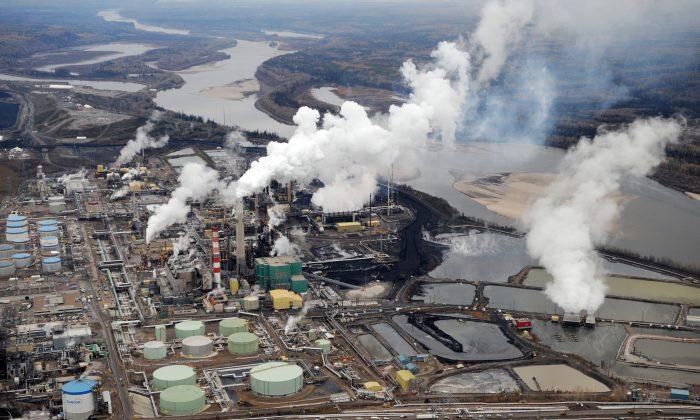Time will tell if a new government website that provides access to environmental monitoring of the Alberta oil sands can be considered credible, says a national environmental group.
Federal Environment Minister Peter Kent and Alberta’s Environment and Sustainable Resource Development Minister Diana McQueen announced Monday that access to federal and provincial environmental monitoring data on air, water, land, and biodiversity in the oil sands will now be available through an online data portal (www.JointOilSandsMonitoring.ca).
“There are still significant concerns over how this program will be funded, how it will be governed, and how it will be free from [politics] or political influence,” says Nathan Lemphers, an oil sands policy analyst for the Pembina Institute.
“Ensuring that there is a credible monitoring program is critical if the government or the oil sands industry is to improve public trust.”
The new data portal—part of the Joint Canada-Alberta Implementation Plan for Oil Sands Monitoring announced in February 2012—represents a move to improve the image of the oil patch, which has come under increased international scrutiny due to high-profile projects like the Keystone XL pipeline.
Both the federal and provincial governments have also faced frequent criticism for a lack of transparency around environmental monitoring in the region.
The new site was launched April 22 to coincide with Earth Day.
“With this portal, our respective governments are actively encouraging informed discussions and analysis on the impacts of oil sands development,” Kent said in a statement.
“Alberta is proud to co-lead the development and implementation of this world-class, science-based monitoring program for the oil sands,” added McQueen.
“By openly reporting on our data and our progress, we are ensuring the rest of the world recognizes our commitment to responsible and sustainable resource development.”
The portal will provide information about the impacts of oil sands activity covering 140,000 square kilometres of northern Alberta.
Designed to complement research currently available on the Environment Alberta oil sands data website, the new data will provide an overview of the environmental monitoring process in the area along with a map identifying specific water, air, land, and biodiversity monitoring sites.
This information sharing marks an important step in the joint oil sands monitoring program which will complete its implementation in 2015, but it remains to be seen whether the governments will actually use the information to guide oil sands development decisions, says Lemphers.
“The true test of effectiveness will be whether or not this new monitoring data will be used to inform future oil sands development decisions,” he says, adding previous monitoring programs have failed due to a lack of independence from both industry and government.
“It’s frankly too early to tell. There is still another two years before the monitoring plan is fully implemented.”
Greenpeace Canada echoed these concerns in a statement Monday, saying new oil sands projects should not be approved before a rigorous environmental monitoring system is in place.
“Good data is better than bad data, but the important thing is that we use it to make better decisions,” said Keith Stewart of Greenpeace Canada.
“This monitoring system is still a work in progress, yet new tar sands projects are being rushed through the assessment process before we know the real impact of existing operations.”





Friends Read Free